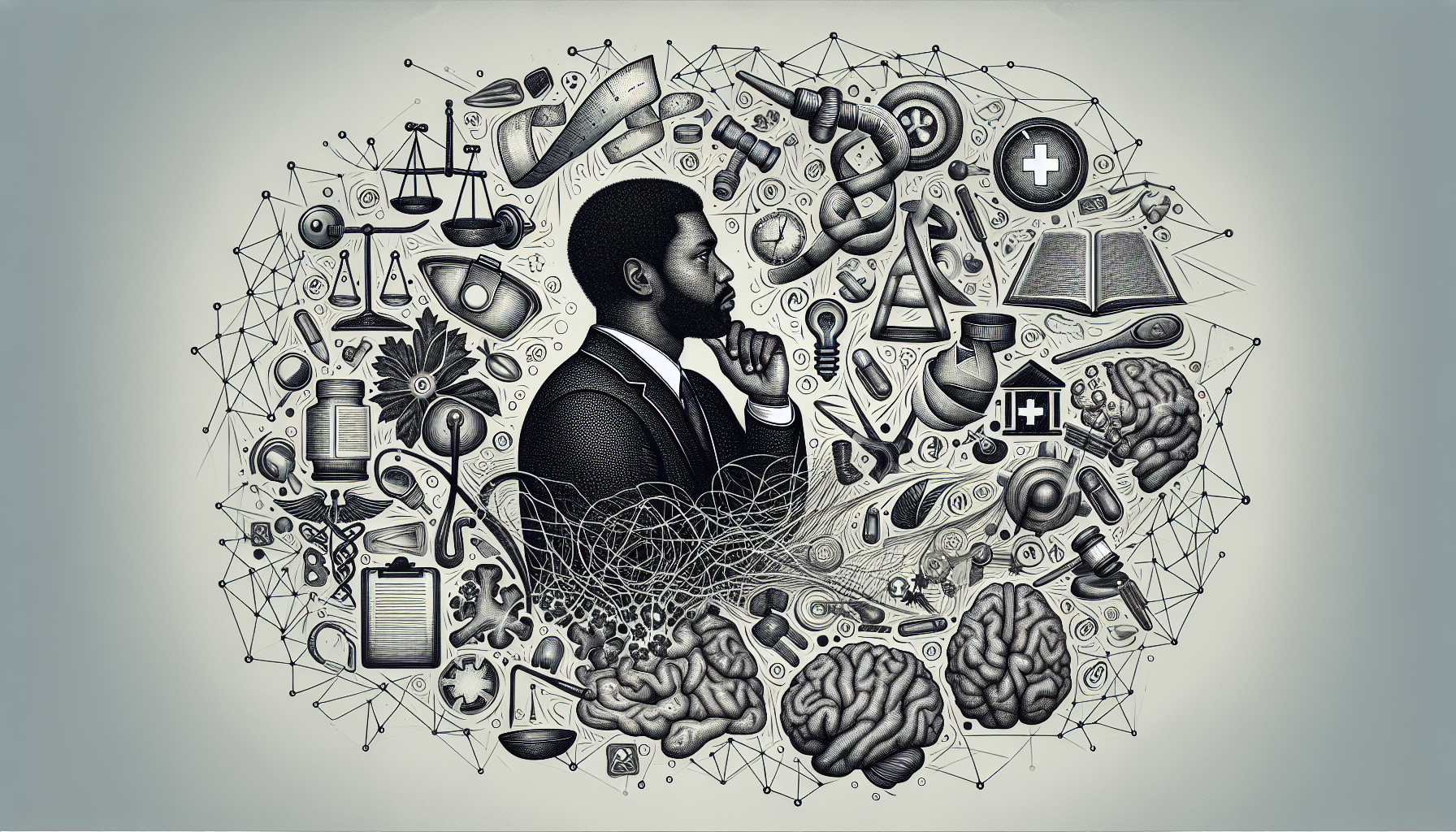
Setting the Stage for Efficiency: What Paralegals Need to Know
The preparation of mitigation reports stands at the crux of many criminal cases, often serving as a cornerstone for reducing sentencing. Paralegals play an indispensable role in crafting these detailed documents, necessitating a mix of legal knowledge, research acumen, and narrative skill. With the advent of AI technologies like ChatGPT, the landscape of legal workflows is undergoing a transformation. Understanding how ChatGPT can be integrated into the preparation of mitigation reports can lead to remarkable efficiencies and enhanced quality.
The Power of Prompts: Getting Started with ChatGPT
Grasping the power of prompts is fundamental when working with ChatGPT. In simple terms, prompts are the questions or statements you input to guide the AI’s response. The quality and specificity of these prompts directly affect the relevance and accuracy of the generated content.
- Open-Ended Questions: These encourage detailed responses. For instance, “Describe the defendant’s background and history.” allows ChatGPT to provide a comprehensive summary.
- Contextual Inputs: Incorporate specific details for better results. For example, “In the context of a non-violent drug offense, outline potential mitigating circumstances.”
- Legal Terminology: Using precise legal language ensures the AI’s outputs are more aligned with the required professional standard. A query like, “List precedents where mitigating circumstances affected sentencing in drug-related cases,” is useful.
With these principles in mind, you can craft effective prompts to optimize the utility of ChatGPT. In the next section, we delve deeper into creating nuanced prompts that lay a solid foundation for your work.
Also read:
Crafting Nuanced Prompts: Building the Foundation
To maximize ChatGPT’s potential, paralegals must master the art of crafting nuanced prompts. This involves several techniques that go beyond basic question framing.
Techniques for Asking Open-Ended Questions
Open-ended questions help you extract detailed, context-rich responses. Instead of a direct query like, “Did the defendant have a difficult childhood?” ask, “Can you elaborate on the defendant’s upbringing and any associated hardships?”
Leveraging Context for More Accurate Outputs
Contextualizing your input enables ChatGPT to deliver tailored information. For instance, starting a prompt with, “Focusing on a first-time offender in a financial fraud case,” narrows down the response to be highly relevant.
Incorporating Legal Terminology and Case-Specific Details
Embedding specific legal terms and facts from the case into your prompts ensures that responses are precise and applicable. For example, “Define the legal implications of mitigating factors in a federal narcotics distribution case,” not only elicits a precise definition but also contextually anchors the information to your specific needs.
By honing these techniques, you lay a sturdy foundation for generating high-quality mitigation reports. Moving forward, let’s explore a step-by-step guide on how to leverage ChatGPT effectively for this purpose.
Also read:
Step-by-Step Guide: Leveraging ChatGPT for Mitigation Reports
Creating a comprehensive mitigation report can be a multi-faceted process. Here’s a detailed guide on how to leverage ChatGPT at each stage:
Breaking Down the Mitigation Report Structure
Start by understanding the essential components of a mitigation report:
- Client Background: Detailed narratives about the defendant’s history and circumstances.
- Offense Overview: Clear explanation of the crime committed.
- Mitigating Circumstances: Factors that might reduce the blameworthiness or sentencing.
- Personal Statement: Defendant’s personal reflections and remorse.
Utilizing ChatGPT for Research and Data Gathering
Input broad prompts to gather foundational information, such as, “Summarize recent research on mitigating factors in sentencing for non-violent offenses.”
Enhancing Client Profiles and Background Information
Refine your focus to derive nuanced insights. Use prompts like, “Describe socioeconomic challenges impacting individuals convicted of first-time non-violent drug offenses,” to enhance sections of the report that discuss the defendant’s background.
Collaborative Review: Iterating with AI for Precision
Employ multi-turn conversations with ChatGPT to refine information iteratively. Start with an initial prompt and follow up with more specific questions based on ChatGPT’s replies. For example:
- First query: “Provide a general profile of a first-time offender in a non-violent crime.”
- Follow-up: “Focus on psychological challenges often faced by such individuals.”
This iterative process improves precision and helps in creating a comprehensive report. Next, let’s explore some advanced techniques for maximizing the utility of language models (LLMs).
Also read:
Advanced Techniques: Maximizing The Utility of LLMs
Beyond basic information gathering, more sophisticated techniques can be employed to maximize ChatGPT’s utility for legal documentation.
Using Multi-Turn Conversations to Refine Content
Interact with ChatGPT through back-and-forth discussions to refine the generated output. Start broad, then narrow down:
- Initial: “Explain the impact of childhood trauma on criminal behavior.”
- Specific: “Relate this to a 25-year-old first-time offender in a theft case.”
Implementing Roleplay Scenarios for Better Insight and Argumentation
Simulate scenarios where ChatGPT plays different roles, such as a defense attorney or psychologist. Example:
- “As a defense attorney, outline how you would present the mitigating factors for a defendant involved in a non-violent drug offense.”
- “As a psychologist, explain the long-term effects of socio-economic deprivation on behavior.”
Combining Outputs from Multiple AI Models for Comprehensive Reports
Use responses from multiple AI models to create a synthesized, comprehensive report. Different models can offer varied perspectives, enriching the final document:
- ChatGPT: “Summarize the psychological impact of solitary confinement.”
- Another AI: “List legal precedents related to mitigating factors in solitary confinement cases.”
These advanced techniques can significantly enhance the quality and depth of your mitigation reports. However, ethical considerations must always be at the forefront when using AI in legal contexts.
Also read:
Compliance and Ethical Considerations
Incorporating AI into legal workflows necessitates a strong focus on compliance and ethics.
Addressing Confidentiality and Data Security
Ensure any client data input into ChatGPT complies with confidentiality protocols. Encrypt sensitive information and avoid uploading identifiable details.
Understanding Ethical Boundaries in AI-Driven Legal Work
AI can assist but cannot replace the nuanced judgment of legal professionals. Use AI to supplement human expertise, ensuring that final decisions and reports reflect thorough professional oversight.
By maintaining a clear ethical framework, you ensure that AI applications are beneficial and responsible. Now, let’s conclude with a forward-looking perspective on AI in legal practice.
Also read:
Final Thoughts: Moving Forward with AI as Your Ally
Embracing AI technologies like ChatGPT presents a tremendous opportunity for paralegals to elevate their legal practice. By mastering the art of prompt engineering and leveraging advanced techniques, paralegals can produce mitigation reports that are not only efficient but also robust in quality. Continuous learning and adaptation are key as AI evolves, making it an indispensable ally for future-ready legal professionals.


